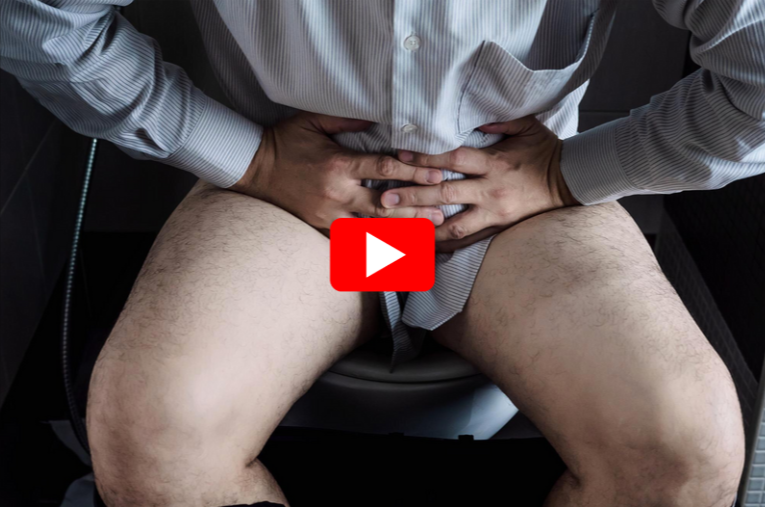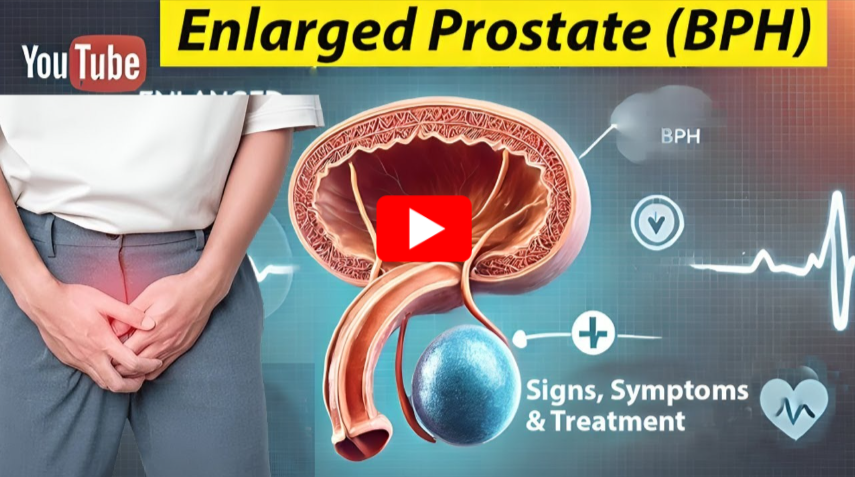What Does a Swollen Prostate Feel Like? Symptoms & Effects
Contents
- 1 Swollen Prostate Symptoms EXPLAINED!😣🩺| What Does It Feel Like?🤔
- 2 What Is the Prostate, and Why Does It Swell?
- 3 What Does a Swollen Prostate Feel Like?
- 4 What Causes the Prostate to Swell?
- 5 Feeling This?😳 It Could Be a Swollen Prostate | Must Watch!👀
- 6 How Is a Swollen Prostate Diagnosed?
- 7 Treatment for a Swollen Prostate
- 8 Conclusion
A swollen prostate may cause symptoms like frequent urination, a weak urine stream, urgency, difficulty starting or stopping urination, and pelvic discomfort.
Swollen Prostate Symptoms EXPLAINED!😣🩺| What Does It Feel Like?🤔
A swollen prostate, often referred to as benign prostatic hyperplasia (BPH), is a common condition that affects men, especially as they age. The prostate, a small gland that sits below the bladder and surrounds the urethra, plays a crucial role in producing seminal fluid.
As men grow older, this gland can enlarge, causing a variety of symptoms that can significantly affect daily life. So, what does a swollen prostate feel like, and how do you know if you’re experiencing it?
A swollen prostate may cause frequent urination, weak urine flow, difficulty starting urination, and the feeling of incomplete bladder emptying.
In this article, we’ll explore what a swollen prostate feels like, the causes behind it, how it’s diagnosed, and available treatments to manage the condition.
What Is the Prostate, and Why Does It Swell?
The prostate is a walnut-sized gland located just below the bladder, surrounding the urethra. It plays an essential role in the male reproductive system by producing a portion of the fluid that nourishes and transports sperm.
When the prostate becomes enlarged or swollen, it may press against the urethra and bladder, leading to various symptoms that interfere with normal urination.
The condition of an enlarged prostate is most commonly referred to as benign prostatic hyperplasia (BPH).
Unlike prostate cancer, which is a malignant condition, BPH is a non-cancerous enlargement of the prostate. However, BPH can still cause discomfort and significant complications if left untreated.
What Does a Swollen Prostate Feel Like?
A swollen prostate can cause a range of symptoms, many of which are related to urination. The most common signs of an enlarged prostate include:
1. Frequent Urination
One of the hallmark symptoms of a swollen prostate is the need to urinate frequently, especially at night. This condition is known as nocturia, and it can disrupt sleep and impact a person’s quality of life. A swollen prostate compresses the bladder, leading to increased urgency to empty the bladder, even when it’s not fully full.
2. Difficulty Starting or Stopping Urination
Many men with a swollen prostate experience hesitancy when trying to start urination. This is often due to the pressure the enlarged prostate places on the urethra, restricting urine flow. On the flip side, some may have difficulty stopping urination, resulting in a feeling of incomplete emptying of the bladder.
3. Weak Urine Flow
A swollen prostate can also lead to a weak urine stream. As the prostate enlarges, it narrows the urethra, making it harder for urine to flow freely. This results in a urine stream that is slower than usual or seems to stop and start intermittently.
4. Straining to Urinate
Some men may find themselves needing to strain or push harder than usual when urinating. This happens because the enlarged prostate blocks the normal flow of urine, making it difficult to pass it easily. Over time, this can lead to discomfort or fatigue during urination.
5. Incomplete Bladder Emptying
After urinating, men with a swollen prostate may feel like they haven’t fully emptied their bladder. This sensation of urinary retention can be frustrating and may lead to frequent trips to the bathroom.
6. Urgency and Incontinence
Urgency is another common symptom of an enlarged prostate. Men with BPH often feel a sudden, strong urge to urinate, sometimes with little warning. In more severe cases, this urgency can lead to urinary incontinence, which is the involuntary leakage of urine.
7. Pain or Discomfort
A swollen prostate may also cause mild discomfort or pain in the pelvic region. This can range from a dull ache to more noticeable discomfort during or after urination. Although less common, pain may also be felt in the lower back or perineum (the area between the scrotum and anus).
8. Blood in the Urine or Semen
In rare cases, a swollen prostate can cause blood to appear in the urine or semen. This can happen due to the increased pressure on blood vessels in the area. While it’s usually not a sign of cancer, any blood in the urine or semen should be checked by a doctor to rule out other potential conditions.
What Causes the Prostate to Swell?
The exact cause of prostate enlargement is not entirely understood, but it is believed to be related to hormonal changes that occur as men age.
As testosterone levels naturally decrease, the balance of hormones in the body shifts, potentially leading to the growth of prostate cells.
Some of the most common causes and risk factors for a swollen prostate include:
1. Aging
Aging is the primary risk factor for benign prostatic hyperplasia. Over 50% of men over the age of 60 experience some degree of prostate enlargement. The condition becomes more common as men reach their 70s and 80s.
2. Hormonal Changes
Hormonal changes, particularly the imbalance between testosterone and estrogen levels, are thought to contribute to prostate growth. As men age, the production of testosterone decreases, while estrogen levels may remain the same or increase slightly, which can encourage prostate cell growth.
3. Family History
Genetics play a role in the development of BPH. Men with a family history of the condition are more likely to experience prostate enlargement themselves.
4. Obesity
Being overweight or obese can increase the risk of developing a swollen prostate. Obesity is linked to higher levels of estrogen, which can promote prostate growth.
5. Chronic Conditions
Certain health conditions, such as diabetes and high blood pressure, may increase the risk of developing BPH. Additionally, cardiovascular diseases and sedentary lifestyles may contribute to prostate issues.
6. Inflammation or Infection
Chronic inflammation or infection in the prostate can sometimes lead to swelling and enlargement. These infections can make urination more difficult and uncomfortable.
Feeling This?😳 It Could Be a Swollen Prostate | Must Watch!👀
How Is a Swollen Prostate Diagnosed?
If you are experiencing symptoms of a swollen prostate, it’s important to seek medical advice to determine the cause.
Your doctor will likely begin with a physical exam, including a digital rectal exam (DRE), where the doctor uses a gloved finger to feel the prostate for abnormalities or enlargement. Additionally, other diagnostic tests may include:
-
Urinalysis: A urine test can help rule out infections or blood in the urine.
-
Prostate-Specific Antigen (PSA) Test: This blood test measures the levels of PSA, a protein produced by the prostate. Elevated PSA levels can indicate prostate issues, including BPH or prostate cancer.
-
Ultrasound or Imaging Tests: In some cases, imaging tests may be done to assess the size of the prostate or check for complications.
-
Uroflowmetry: This test measures the flow rate of urine to assess whether there is any blockage in the urinary tract.
Treatment for a Swollen Prostate
While a swollen prostate is rarely a life-threatening condition, it can significantly affect your quality of life.
Treatment options depend on the severity of symptoms, the size of the prostate, and the individual’s overall health. Some common treatment options include:
1. Lifestyle Changes
For mild symptoms, lifestyle changes can help manage a swollen prostate. These changes may include:
-
Limiting fluid intake before bed to reduce nocturia.
-
Avoiding alcohol and caffeine, which can irritate the bladder.
-
Practicing bladder training techniques, such as timed voiding to reduce urgency.
2. Medications
Several medications can help manage the symptoms of a swollen prostate:
-
Alpha-blockers: These medications relax the muscles around the prostate and bladder, making it easier to urinate.
-
5-alpha-reductase inhibitors: These drugs reduce the size of the prostate by blocking the hormone that causes prostate growth.
-
Combination therapy: A combination of alpha-blockers and 5-alpha-reductase inhibitors may be used for more severe cases.
3. Minimally Invasive Procedures
If medications are not effective, minimally invasive treatments may be recommended. These include:
-
Transurethral resection of the prostate (TURP): This surgical procedure removes part of the prostate tissue to relieve pressure on the urethra.
-
Laser therapy: Lasers can be used to shrink or remove excess prostate tissue.
-
UroLift: A procedure that lifts and holds the enlarged prostate tissue out of the way to open the urethra.
4. Surgery
In severe cases, surgery may be necessary to remove a portion of the prostate. This is usually reserved for cases that do not respond to other treatments.
Conclusion
A swollen prostate, while not life-threatening, can lead to a variety of uncomfortable symptoms that impact daily life.
Frequent urination, weak urine flow, and discomfort in the pelvic area are all common signs of an enlarged prostate.
If you’re experiencing symptoms, it’s important to seek medical attention to determine the cause and explore treatment options.
By making lifestyle changes, taking medications, or undergoing minimally invasive procedures, many men can effectively manage the condition and improve their quality of life.
.
.
References
-
American Urological Association. (n.d.). Benign Prostatic Hyperplasia (BPH).
-
Mayo Clinic. (2022). Benign Prostatic Hyperplasia (BPH).
-
National Institute of Diabetes and Digestive and Kidney Diseases. (2020). Benign Prostatic Hyperplasia.
-
Cleveland Clinic. (2021). Prostate Enlargement (BPH) – Symptoms, Causes, Treatment.
How useful was this post?
Click on a star to rate it!
Average rating 5 / 5. Vote count: 5
No votes so far! Be the first to rate this post.



